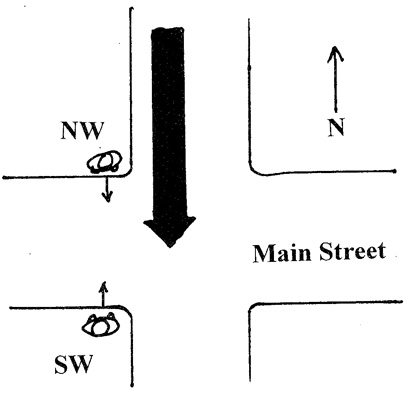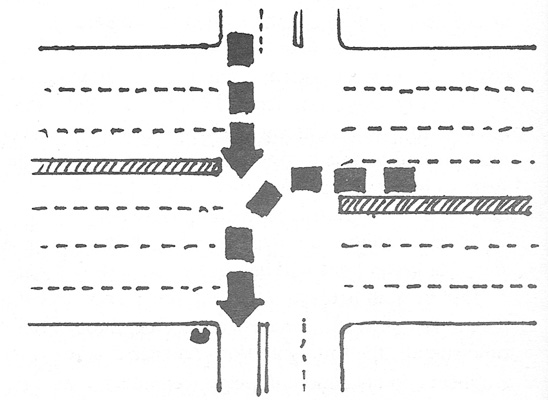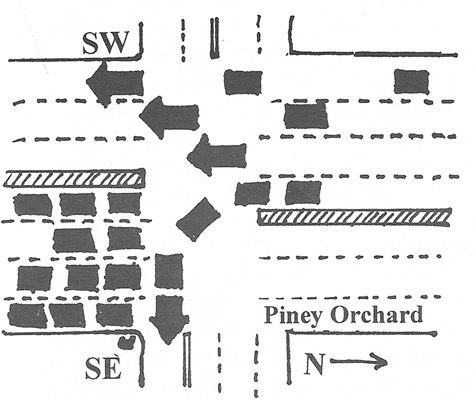The effect of actuation and being able to change signal timing easily is that
it is impossible to predict the pattern or the timing of traffic signals.
A solution that seems to work:
Many of us have struggled to develop strategies for determining when to cross at complex intersections.
One strategy that seems effective for avoiding crossing when the left-turners have the right of way (such as at signals with split phases and protected left phases) was explained by Frieswyk (2005) and Barlow et al (2005). This strategy is to cross with the nearest parallel traffic. That is, if crossing either to or from the NW and SW corners, start to cross with the southbound traffic, as shown in Figure 1.

Figure 1: To avoid starting to cross when left-turners have the right of way, cross with the nearest parallel traffic. In this example, if crossing Main Street from the NW or SW corners, the nearest parallel traffic is the southbound traffic, as shown with the large arrow.
The only exception Iíve seen for this rule is at an intersection where the traditional rule of crossing with parallel traffic also doesnít work, because during the entire time that the parallel traffic is moving, it has an arrow to turn right, and pedestrians get a ďdonít walk" signal and must wait. Pedestrians get their walk signal at another time.
Although the exceptions to this strategy are rare, blind pedestrians should always analyze unfamiliar intersections and be prepared for unusual situations like this one.
Dangerous strategies!
The aforementioned strategy seems to work for split and protected left phases, but what about situations where no parallel traffic is moving when itís time to start crossing? For example, at lead pedestrian intervals and at exclusive pedestrian phases there is no parallel traffic movement permitted when the pedestrians should start crossing. And of course there are many situations where the surge of traffic on the parallel street, which our traditional strategy uses as a cue to indicate when itís time to cross, doesnít exist or cannot be heard. The only suggestion from Barlow et al (2005) is an accessible pedestrian signal (APS).
Many well-meaning O&M specialists and advocates have come up with alternative strategies which seem to be effective but which, upon more careful analysis, have each turned out to be dangerous because they are potentially misleading. These strategies involve:

